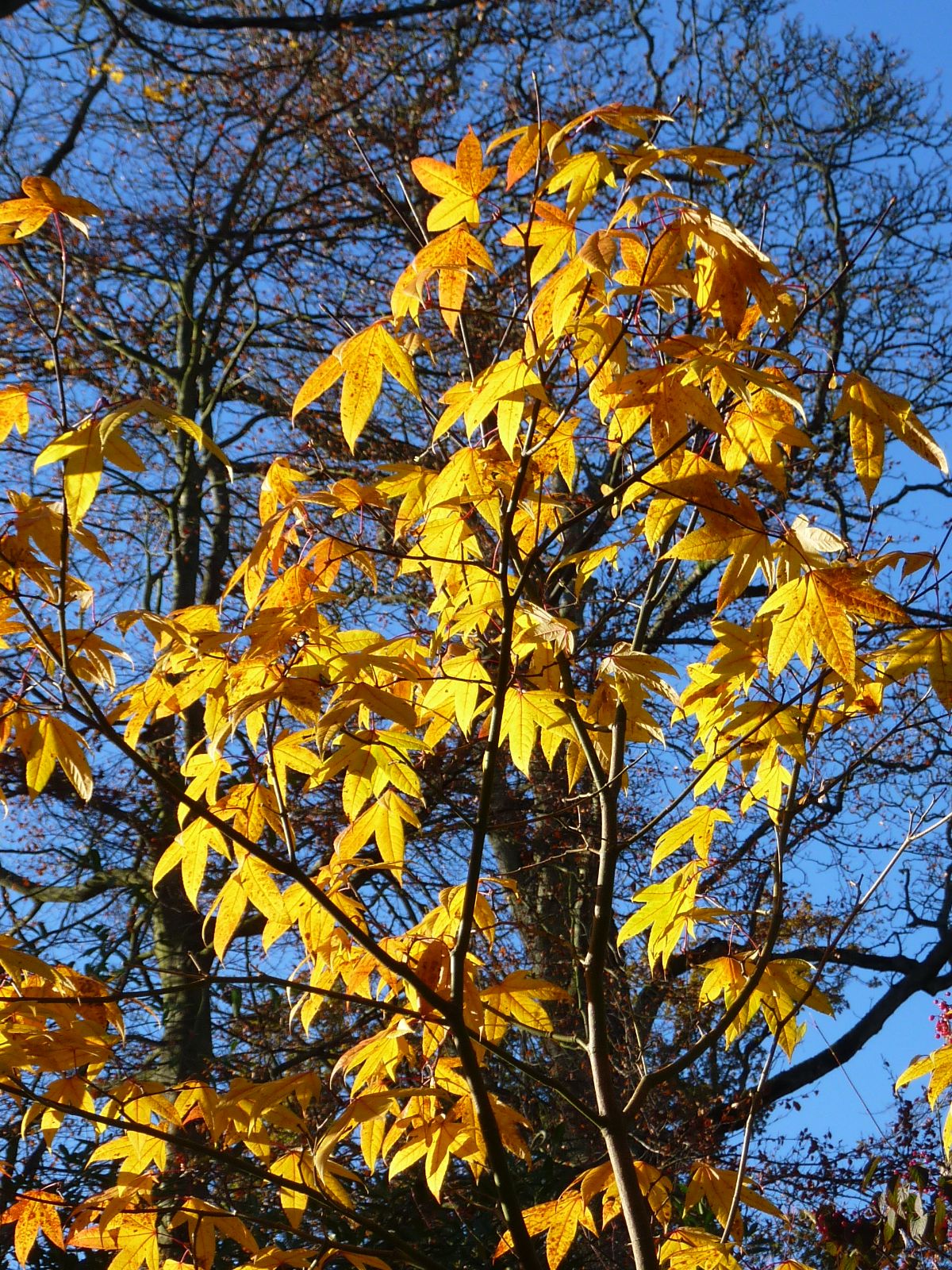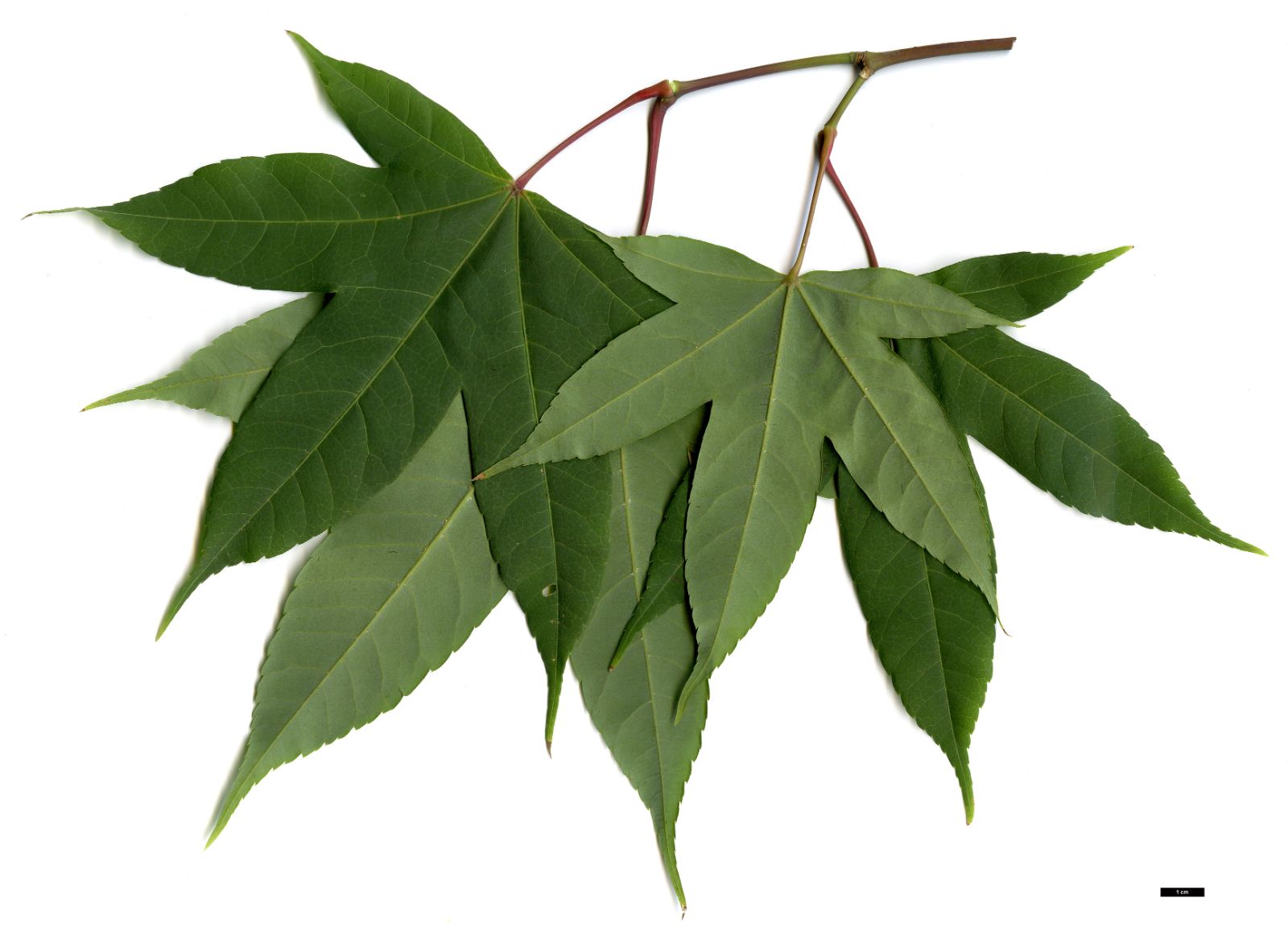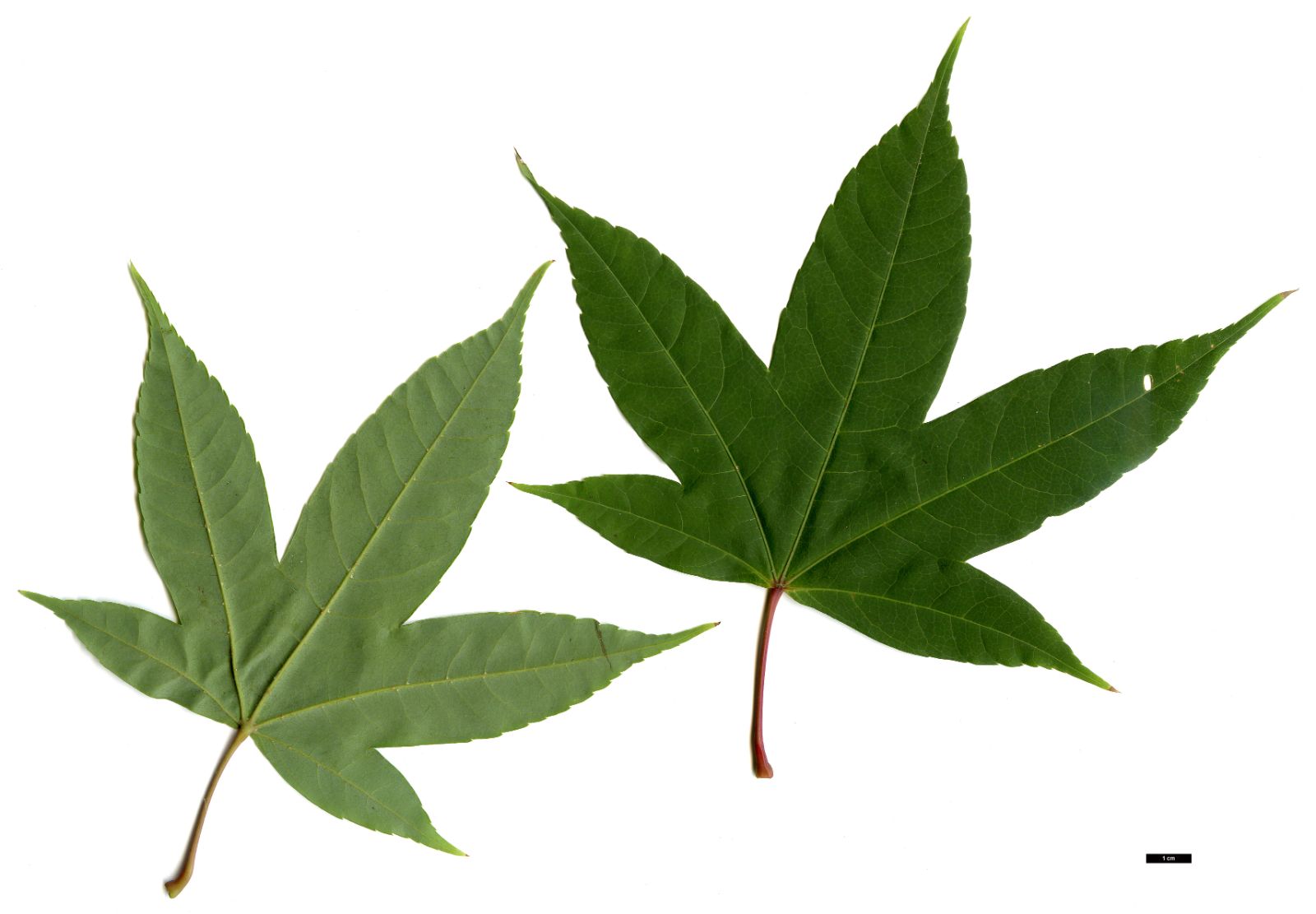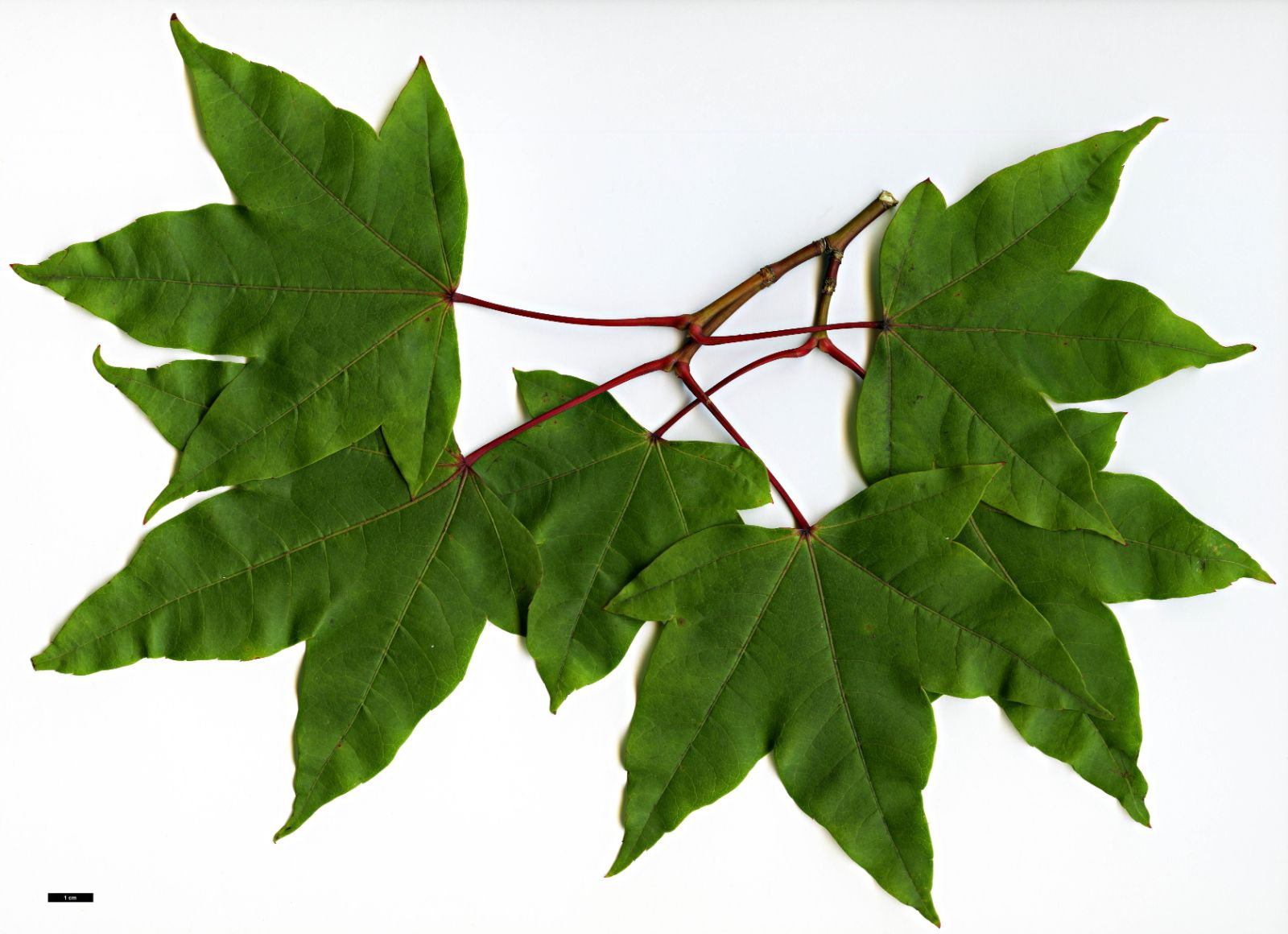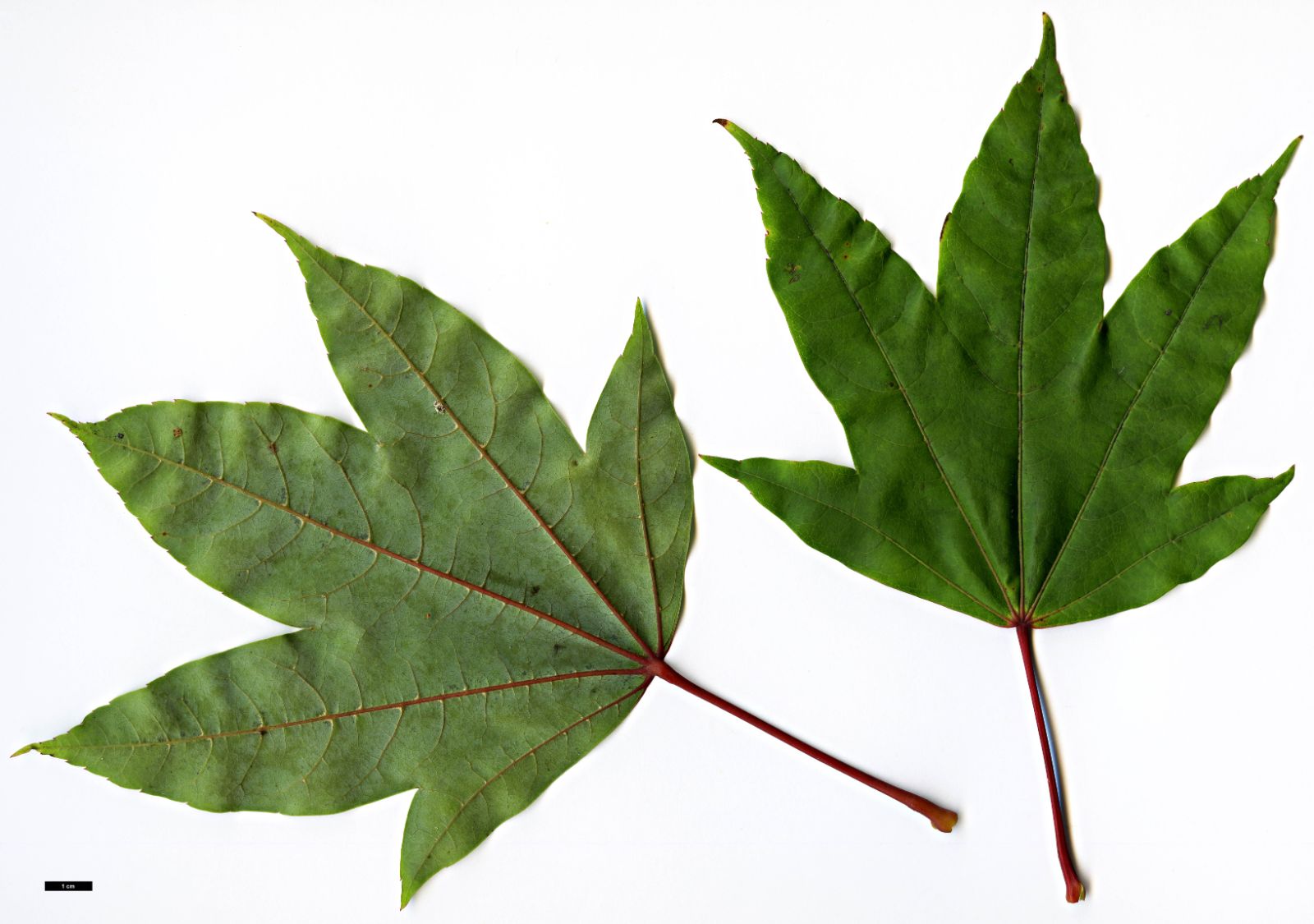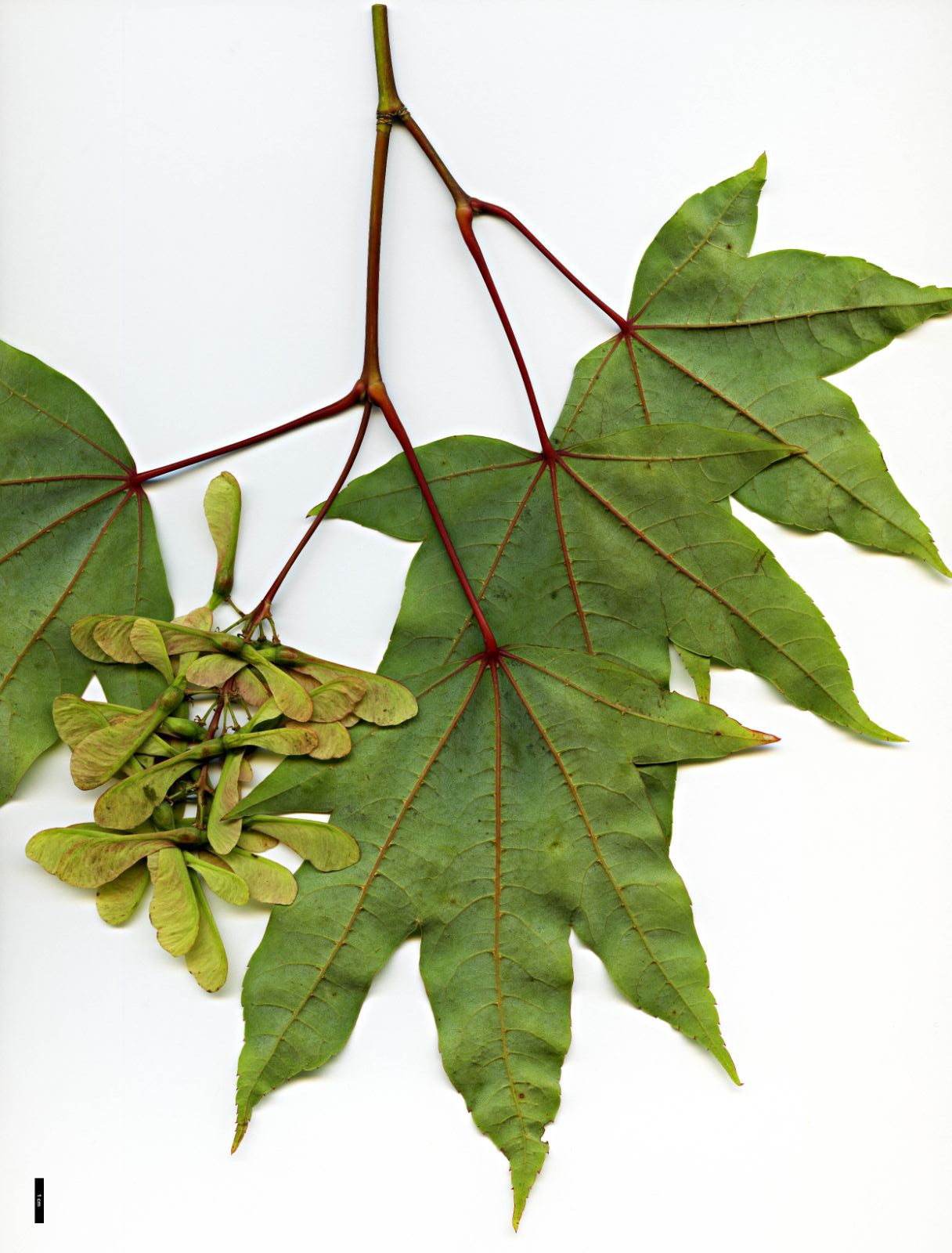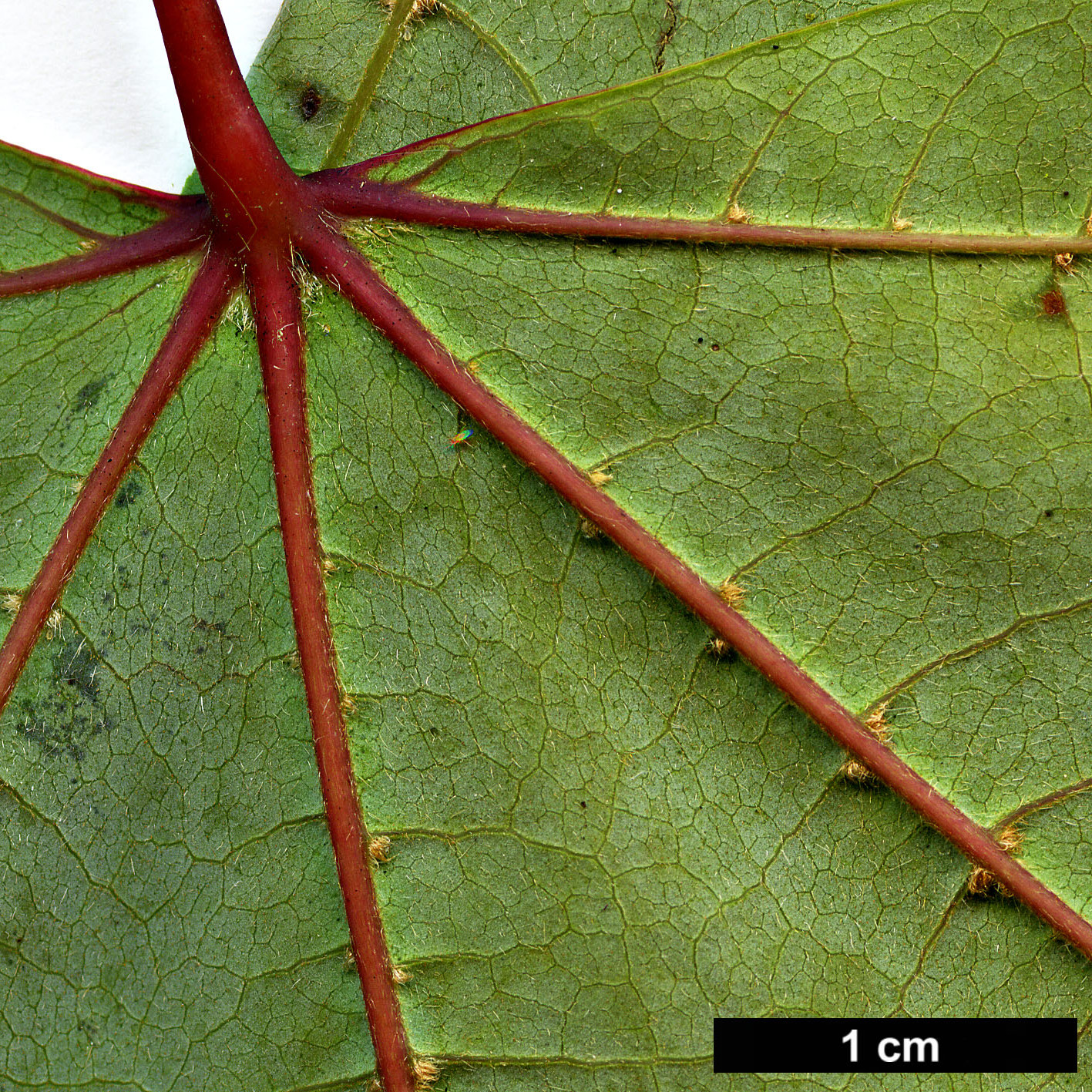Acer sinense
Sponsor
Kindly sponsored by
Lawrence Banks
Credits
Dan Crowley (2020)
Recommended citation
Crowley, D. (2020), 'Acer sinense' from the website Trees and Shrubs Online (treesandshrubsonline.
Genus
- Acer
- Section Palmata, Ser. Sinensia
Synonyms
- Acer campbellii subsp. sinense (Pax) P. C. de Jong
- Acer sinense var. concolor Pax
- Acer sunyiense W. P. Fang
Infraspecifics
Other taxa in genus
- Acer acuminatum
- Acer amplum
- Acer argutum
- Acer barbinerve
- Acer buergerianum
- Acer caesium
- Acer calcaratum
- Acer campbellii
- Acer campestre
- Acer 'Candy Stripe'
- Acer capillipes
- Acer cappadocicum
- Acer carpinifolium
- Acer 'Cascade'
- Acer caudatum
- Acer ceriferum
- Acer chapaense
- Acer chienii
- Acer circinatum
- Acer cissifolium
- Acer × conspicuum
- Acer cordatum
- Acer coriaceifolium
- Acer × coriaceum
- Acer crataegifolium
- Acer davidii
- Acer diabolicum
- Acer distylum
- Acer divergens
- Acer duplicatoserratum
- Acer elegantulum
- Acer erianthum
- Acer 'Esk Flamingo'
- Acer fargesii
- Acer fenzelianum
- Acer flabellatum
- Acer forrestii
- Acer franchetii
- Acer × freemanii
- Acer fulvescens
- Acer 'Gimborn'
- Acer ginnala
- Acer glabrum
- Acer 'Gold Coin'
- Acer granatense
- Acer grandidentatum
- Acer griseum
- Acer heldreichii
- Acer henryi
- Acer × hillieri
- Acer hookeri
- Acer hyrcanum
- Acer japonicum
- Acer kawakamii
- Acer komarovii
- Acer laevigatum
- Acer laurinum
- Acer laxiflorum
- Acer lobelii
- Acer longipes
- Acer macrophyllum
- Acer mandshuricum
- Acer maximowiczianum
- Acer maximowiczii
- Acer metcalfii
- Acer miaotaiense
- Acer micranthum
- Acer 'Mindavi'
- Acer 'Minorient'
- Acer miyabei
- Acer miyabei × campestre
- Acer monspessulanum
- Acer morifolium
- Acer 'Mozart'
- Acer oblongum
- Acer obtusifolium
- Acer okamotoanum
- Acer oliverianum
- Acer opalus
- Acer orientale
- Acer palmatum
- Acer papilio
- Acer pauciflorum
- Acer pectinatum
- Acer pensylvanicum
- Acer pentaphyllum
- Acer pentapotamicum
- Acer pictum
- Acer pilosum
- Acer pinnatinervium
- Acer platanoides
- Acer platanoides × amplum
- Acer platanoides × truncatum
- Acer × pseudoheldreichii
- Acer pseudoplatanus
- Acer pseudosieboldianum
- Acer pubinerve
- Acer pycnanthum
- Acer rubescens
- Acer rubrum
- Acer rufinerve
- Acer saccharinum
- Acer saccharum
- Acer sempervirens
- Acer 'Serpentine'
- Acer serrulatum
- Acer shenkanense
- Acer sieboldianum
- Acer sikkimense
- Acer 'Silver Cardinal'
- Acer 'Silver Ghost'
- Acer sinopurpurascens
- Acer spicatum
- Acer stachyophyllum
- Acer taronense
- Acer tataricum
- Acer tegmentosum
- Acer tenellum
- Acer tetramerum
- Acer tibetense
- Acer tonkinense
- Acer triflorum
- Acer truncatum
- Acer tschonoskii
- Acer turkestanicum
- Acer tutcheri
- Acer ukurunduense
- Acer velutinum
- Acer wardii
- Acer 'White Tigress'
- Acer wilsonii
- Acer × zoeschense
A deciduous tree usually to 5 m. Bark green when young, turning grey to brown with age, smooth. Branchlets glabrous, purplish-red or greenish, turning darker. Buds ovoid, with 6 pairs of scales. Leaves chartaceous to subcoriaceous, broadly pentagonal in outline, base cordate to truncate, 5– to 7-lobed, 9–14 × 9–15 cm, lobes ovate, apically acuminate, margins remotely serrate, sometimes entire near base, upper surface mid-green, lower surface paler, glabrous except for tufts in vein axils; petiole 3–5 cm long, stout, red to green, glabrous; autumn colours yellow to purple. Inflorescence, terminal, pendulous, paniculate, to seven cm, many flowered. Flowers 5-merous, pedicels short, slender, sepals oblong or nearly so, ciliate margined, petals oblong to obovate, stamens 5 to 8, inserted inside the slightly pubescent, thick nectar disc, ovary pilose. Samaras 2–3.5 cm long, wings spreading variously. Nutlets ovoid. Flowering in May, with unfolding leaves, fruiting in September. (Xu et al. 2008).
Distribution China Fujian, Guangdong, Guangxi, Guizhou, Henan, Hubei, Sichuan
Habitat Forests and valleys between 500 and 2500 m asl.
USDA Hardiness Zone 7-8
RHS Hardiness Rating H4
Conservation status Least concern (LC)
Taxonomic note Acer sinense was treated as a subspecies of Acer campbellii by van Gelderen et al. (1994), who opted to treat is as such on account of there being so little material available to specify practical field characters by which to separate it from that species. However, A. sinense is treated at specific rank by Xu et al. (2008), whose treatment is followed here. Its leaf margins are remotely serrate, rather than serrulate in those of A. campbellii, while its flowers have a pubescent ovary and glabrous disks, while A. campbellii has pubescent ovaries and disks.
A member of the Acer campbellii complex, Acer sinense was first introduced by Ernest Wilson in 1901 as its variety concolor. This so-called variety differed from the typical form in having larger leaves which are green beneath as opposed to glaucous (Bean 1976a). However, as early as 1905, Alfred Rehder considered it barely distinct from the typical form of the species (Sargent 1905). It is listed as a variety by van Gelderen et al. (1994), though as a synonym by Xu et al. (2008), as followed here.
van Gelderen et al. (1994) stated that the species is very rare, with it seemingly lost from cultivation during the 20th century before being reintroduced by James Harris of Mallet Court Nursery, Somerset (Clarke 1988). van Gelderen et al. (1994) also held the opinion that the species is very tender and suitable only for sheltered gardens, though experience since has somewhat disproved this, which is unsurprising given its large range in China. Though the RHS assign the species a hardiness rating of H3 (Edwards & Marshall 2019) here is assigned H4. The only known cultivar, ‘Rogov’, is hardier still, selected at Rogow Arboretum, Poland.
The UK and Ireland Champion has formed a slightly leggy tree in Silk Wood at Westonbirt Arboretum, Gloucestershire, in partial shade of mature Tsuga heterophylla. It measured 6 m tall in 2014 (The Tree Register 2018) and was grown from seed collected by the late Peter Wharton, under PW 004, from the Dashahe Cathaya Reserve, Daozhen county, Guizhou in 1994. The parent plant had also attained 6 m and was festooned with the climbing Hedera nepalensis var. sinensis, in the company of Cunninghamia lanceolata, Rhus vernaciflua and Juglans mandshurica (PW 004). Another example of this collection grows in more open conditions in the Old Arboretum at Westonbirt and has formed a shorter, rounder individual. PW 004 also grows at the David C. Lam Asian Garden, Vancouver, for whom Peter Wharton was collecting. Other established representatives of the species include SICH 1796, which at Westonbirt has formed an attractive, upright tree of over 4 m (pers. obs. 2018), while it also grows at RBG Kew. This was grown from seed collected from 1480 m in Nanjiang County, Sichuan, in 1996, where its associates included other Acer species, Betula luminifera, Rhus verniciflua and Pinus armandii.
SICH 1792, from 1350 m in Nanjiang County, also grows at Kew and Howick. SABE 1805, collected in 1980 from the Shennongjia Forest District, Hubei, and grown in some American collections as A. sinense, has been determined as A. oliverianum by Yousheng Chen from material at the Harvard University Herbarium. Though also sometimes grown as A. sinense, SICH 2393 too belongs to A. oliverianum. See the account of that species for more details of that collection. Though related to A. oliverianum in section Palmata, A. sinense is recognisable from that and other species by its five-lobed leaves, with remotely serrate margins and often glaucous beneath, on stout petioles and shoots. Its early growth is often purple, sometimes almost black.
'Rogov'
RHS Hardiness Rating: H6
A selection made by Cor van Gelderen of Plantentuin Esveld, Boskoop, from a plant at Rogow Arboretum, Poland. Grown from material from Lushan Botanical Garden, China, Acer sinense ‘Rogow’ has brown leaves in spring, is completely hardy in Poland and also produces viable seed (P. Banaszczak, pers. comm. 2020).

